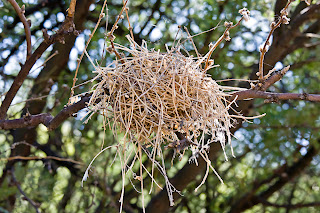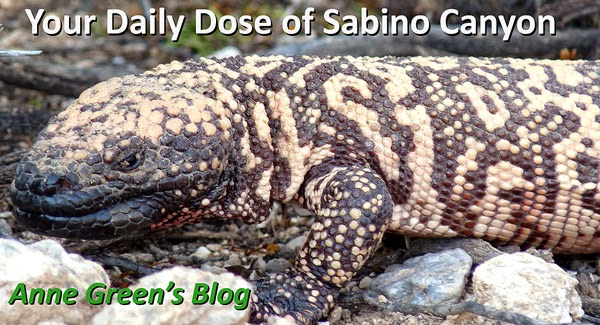 |
| Bagworm Bag, Photo by Bob Wenrick, 12/15/10 |
Friday, December 31, 2010
Out of the bag!
Wednesday, December 29, 2010
Nests to know
Click on the name for a photo of the bird. And you might want to bookmark the site: All About Birds, from the Cornell Lab of Ornithology. Everything you've ever wanted to know about birds and more!
Bell's Vireo nest description from the site above: Open bag-like or basket-like cup of grass, straw-like stems, plant fibers, small skeletonized leaves, paper, and strips of bark fastened with spider silk; lined almost invariably with fine, brown or yellow grass stems. Outside decorated with spider egg cases. Suspended from forks of low branches of small trees or shrubs.
If you are fortunate enough to run into Mark Hengesbaugh in the canyon, ask to see the bird app on his i-phone. Very cool. Cactus wren in French - Troglodyte des cactus - not so much.
Cool Fact: The Verdin builds nests for both breeding and roosting; roosting nests are much smaller. The outer stick shell is constructed mostly by the male, while the female does most of the lining.
And, according to the 'Canyon Grape Vine', Ned Harris is doing great after surgery. Remember, you read it here first!
 |
| Bell's Vireo Nest, photo by Bob Wenrick |
| Cactus Wren nest, Photo by Bob Wenrick |
 |
| Verdin nest, Photo by Bob Wenrick |
And, according to the 'Canyon Grape Vine', Ned Harris is doing great after surgery. Remember, you read it here first!
Monday, December 27, 2010
Don't follow this guy!
 |
| Hog-nosed Skunk |
Sunday, December 26, 2010
Follow the water
Saturday, December 25, 2010
White water
Friday, December 24, 2010
Wednesday, December 22, 2010
Tuesday, December 21, 2010
Javelina babies
| Photos by Gayle from 12/16/10 |
| Lots of info about javelinas here |
Monday, December 20, 2010
Mexican Yellow
 |
| Mexican Yellow, 12/15/10 Photo by Bob Wenrick |
Sunday, December 19, 2010
The eyes have it!
Saturday, December 18, 2010
Fruit and nut
Friday, December 17, 2010
Stop 8 is great!
Wednesday, December 15, 2010
Perfect 10!
 |
| FON on the Bluff trail. Photo by Peggy Wenrick |
 |
| FON at the dam. Photo by Peggy Wenrick |
Sunday, December 12, 2010
Don't be an 'item' for this guy!
 |
| Gopher snake, Photo by Bob Wenrick 12/08/10 |
An update on the pronunciation of leucism/leucistic. As I suspected, it's from the Greek for white. Think 'leukocytes' (white blood cells) and say: 'Luke, I'm your father.' Luke-ism or Luke-istic.
Saturday, December 11, 2010
Bird and Word of the Day
 |
| Phainopepla Male - leucistic |
Friday, December 10, 2010
Getting squirrelly
 |
| Guys, guys, I said: Put your right foot in. Not: Shake it all about. |
Thursday, December 9, 2010
Wednesday, December 8, 2010
Tuesday, December 7, 2010
Red birds OR How to tell your 'cardinals' apart
 |
| Northern Cardinal - male (Cardinalis cardinalis) |
 |
| Pyrrhuloxia - female (Cardinalis sinuatis) |
Monday, December 6, 2010
Friday, December 3, 2010
Fall color
 |
| From the Bluff trail, photo by Ned Harris |
Thursday, December 2, 2010
Don't kiss under this mistletoe!
 |
| Mistletoe berries, Photo by Matt |
 |
| Phainopepla (female) with dangling deposit Photo by Bob Wenrick, 12/1/10 |
Wednesday, December 1, 2010
Deck the halls with puffballs
 |
| Photo by and quarter from Ned Harris, 12/1/10 |
Subscribe to:
Posts (Atom)



